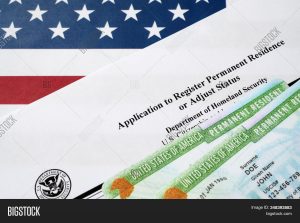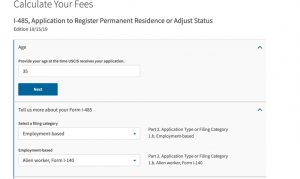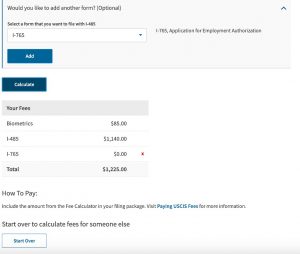Who Can Apply for a Green Card?
In order to apply for a Green Card, you must be eligible under one of the categories listed below:
- Green Card Through Family
- Green Card Through Employment
- Green Card as a Special Immigrant
- Green Card through Refugee or Asylee status
- Green Card for Human Trafficking and Crime Victims
- Green Card for Victims of Abuse
- Green Card Through Other Categories
- Green Card Through Registry
Who is Eligible for Adjustment of Status?
The eligibility requirements for adjustment of status may vary depending on the immigrant category you are applying for:
- The first step in the adjustment of status process is to determine if you fit into a specific immigrant category
- In general, you may not file your Form I-485 until a visa is available in your category
- Check your priority date in the Visa Bulletin to determine whether or visa is available in your category
We will only cover Employment-Based Green Card this time
Employment-Based Immigration Limitations:
- Employment-based immigrant visas are limited to 140,000 per year
- There are limits to the percentage of immigrant visas that can be allotted to each country
- Employment-based immigrant visas for individuals are limited, and not always equally available for all countries
- The availability is often dependent on the country of birth, for example, India, China has a backlog, but it might be available if you are not born in one of those backlogged countries
Who Can File I-485?
If you are in the United States and are eligible for adjustment of status, you may file a Form I-485
What Documents Are Required for Filing an Employment-based I-485 Forms?
Given Below is a Generic Document Checklist for the Principal Applicant and Their Derivative Applicants
For the Principal Applicant:
- Two passport-style photographs
- A copy of a government-issued identity document with a photograph
- A copy of your birth certificate (if unavailable or does not exist, provide other acceptable evidence of birth such as a church, school, or medical records, and proof of unavailability or nonexistence, if applicable)
- Inspection and admission, or inspection and parole documentation (unless applying for adjustment under INA 245(i)). For more information or examples, please refer to the form instructions.
- Documentation of immigrant categories, such as a copy of Form I-797, Approval or Receipt Notice, for the immigrant petition (unless you are filing your Form I-485 with the petition, such as Form I-140)
- Evidence you continually maintained a lawful status since arriving in the United States (or that you are exempt under 245(k) from the INA 245(c)(2), (7) and (8) bars)
- Confirmation of job offer (on Form I-485 Supplement J (if applicable))
- A signed statement confirming you intend to work in the occupational field specified in the Form I-140 if you are a self-petitioner
- Form I-864, Affidavit of Support
- Certified police and court records of all criminal charges, arrests, or convictions regardless of final disposition (if applicable)
- Form I-601, Waiver of Inadmissibility (if applicable)
- Form I-212, Application for Permission to Reapply for Admission into the United States After Deportation or Removal (if applicable)
- Documentation regarding J-1 and J-2 exchange visitor status (Form I-612, if applicable)
- Form I-508, Waiver of Diplomatic Rights, Privileges, Exemptions, and Immunities
- Form I-566, Interagency Record of Request – A, G, or NATO Dependent Employment Authorization or Change/Adjustment to/from A, G, or NATO Status (only if you have A, G, or NATO nonimmigrant status)
- Form I-485 Supplement A (if applicable)
For the Derivative Applicant:
- Items listed above for principal applicants (except Supplement J or signed statement for self-petitioner);
- A copy of your marriage certificate to the principal applicant or proof of relationship as a child to the principal applicant
- If you are a spouse of the principal applicant and your marriage certificate is unavailable or does not exist, evidence demonstrating its unavailability/nonexistence and other acceptable evidence of marriage (such as church records)
- Evidence you terminated your previous marriage (if applicable)
- Documentation of the principal applicant’s immigrant category (unless you are filing your Form I-485 together with the principal applicant’s Form I-485)
- Documentation of the principal applicant’s Form I-485 or copy of the principal applicant’s Green Card (if not filing together with the principal applicant’s Form I-485).
Please note: You might need additional documents depending on your situation, use the above checklist for information purpose only.
How to File an Adjustment of Status?
That will depend on where you are currently located.
- If You Are Living Outside the United States
- You can become a permanent resident through consular processing
- This is when USCIS works with the Department of State to issue an immigrant visa based on an approved Form I-140, Form I-360, or Form I-526
- When an immigrant visa is available for a specific employment-based visa category and country
2. If You Are Living in the United States
- Once your employer has filed a Form I-140, you may apply for lawful permanent resident status on Form I-485, Application to Register Permanent Residence or Adjust Status, if an immigrant visa is available
- You must have your Form I-140 approved before USCIS can adjudicate your Form I‑485
- Complete and sign your Form I-485
- Pay the filing fee, if applicable; and
- Provide all required evidence and supporting documentation
- Check your status through USCIS online account. You can learn about creating an account here
However, if you are seeking to adjust status through employment creation, you cannot file your Form I-485 until USCIS approves your Form I-526.
What Are the Additional Steps After “Filing” I-485?
- You will receive a notice of confirmation from USCIS, stating the receipt of your application
- You will also receive biometric services notice, if applicable
- Notice to appear for an interview, if required
- Finally, a notice of the decision
Note: If you are applying to adjust your status, you must apply for and receive work authorization if you want to work while your Form I-485 is pending.
How Much Will It Cost to File and Adjustment of Status?
- Use the USCIS Fee Calculator to help determine your fee
What is the Fee Calculator?
- This tool will ask questions to help determine your fee
- It does not store answers to the questions or any other personal information
- This calculator will always have the most up-to-date fee information and can determine the exact filing fees for any form processed at a USCIS Lockbox Facility
How Does It Work?
- Find your form on the dropdown list and click “Submit”
- If your form has a flat fee, it will appear on the next screen
- Your filing fee varies (for example, based on a category or age group), answer the questions that relate to the form you chose
- Click the Calculate button then the fee will appear below based on your answers
- Refer to your Form and Form Instructions as you answer each of the questions
If you are filing concurrently, you may calculate the filing fee for your additional form. If you need to remove that concurrent form, click on the red X.
Can I Calculate the Cost for Everyone in the Family?
- If you want to calculate fees for multiple people, you must use the Fee Calculator separately for each person
- For additional fee calculations, click on the Start Over button to get back to the menu dropdown list.
Look at the Screenshots Below For a Sample:
Use the “Start Over” button to calculate for another one
If you have questions about any new rule or have questions about adjustment of status in general, you can schedule a consultation with us:
Schedule a call at 469-994-9407 or contact us using the form.




